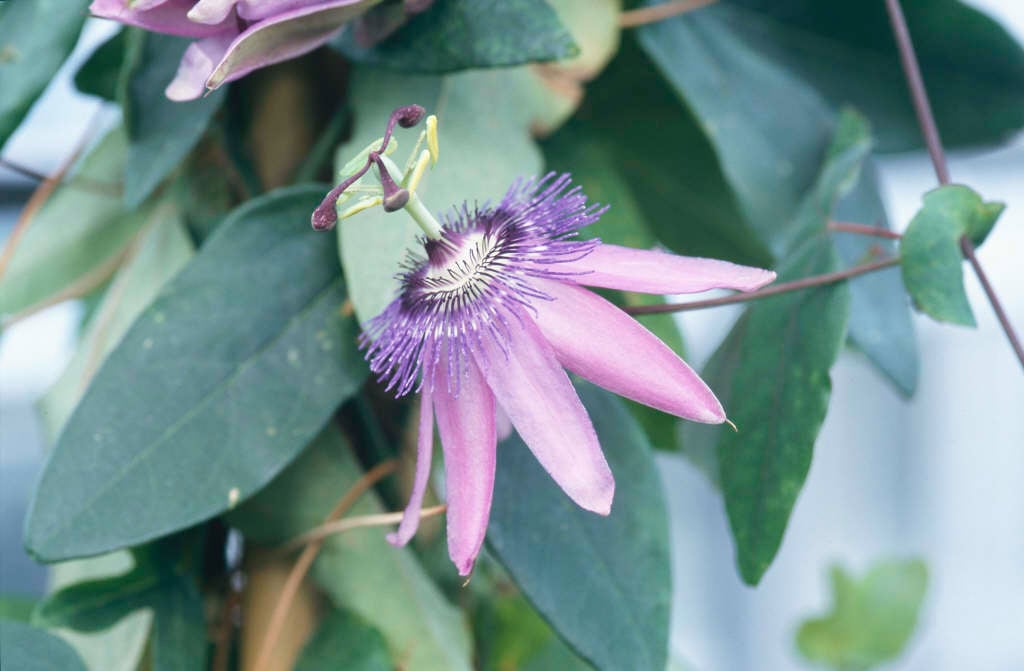Passiflora 'Amethyst'
passion flower 'Amethyst'
Vigorous evergreen climber about 4m tall, with deeply 3-lobed rich green leaves, and purple to purple-blue flowers 10cm across, with green anthers, tepals becoming reflexed with age, and deep purple coronal filaments, flowering in late summer and autumn, followed by orange fruit to 6cm long. The pulp in the fruits only can be eaten when they are fully ripe and yellow-orange. Unripe fruit is toxic
Synonyms
Passiflora 'Lavender Lady'Passiflora 'Star of Mikan'
see morePassiflora amethystina misapplied

Buy this plant
Size
Ultimate height
4–8 metresTime to ultimate height
5–10 yearsUltimate spread
2.5–4 metresGrowing conditions
Moisture
Moist but well–drainedpH
Acid, Alkaline, NeutralColour & scent
| Stem | Flower | Foliage | Fruit | |
| Spring | Green | |||
|---|---|---|---|---|
| Summer | Purple | Green | ||
| Autumn | Purple | Green | ||
| Winter | Green | Orange |
Position
- Full sun
- Partial shade
Aspect
South–facing or West–facing
Exposure
Sheltered Hardiness
H3Botanical details
- Family
- Passifloraceae
- Native to GB / Ireland
- No
- Foliage
- Evergreen
- Habit
- Climbing
- Potentially harmful
- Fruit are ornamental - not to be eaten. Wear gloves and other protective equipment when handling Pets: Fruit are ornamental - not to be eaten - see the HTA guide to potentially harmful plants for further information and useful contact numbers
- Genus
Passiflora are mostly tender tendril-climbing shrubs, with simple or palmately-lobed, generally evergreen leaves and showy flowers of distinctive structure with often colourful coronal filaments, followed by conspicuous fruits, edible in some species
- Name status
Accepted
How to grow
Cultivation
Grow in a conservatory or frost free greenhouse in a container of peat-free, loam-based potting compost in full light, with shade from hot sun. Suited to outdoor cultivation in summer for mild counties only. See passion flower cultivation
Propagation
Propagate by seed, semi-hardwood cuttings or by layering in spring or autumn
Suggested planting locations and garden types
- Sub-tropical
- Conservatory and greenhouse
Pruning
Pruning group 11 or pruning group 12 in early spring
Pests
May be susceptible to glasshouse red spider mite, scale insects and glasshouse whitefly
Diseases
May be susceptible to honey fungus (rarely) and a virus
Love gardening
Sign up to receive regular gardening tips, inspiration, offers and more
View our Privacy Policy
Get involved
The Royal Horticultural Society is the UK’s leading gardening charity. We aim to enrich everyone’s life through plants, and make the UK a greener and more beautiful place.